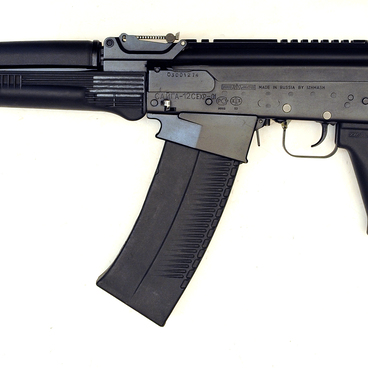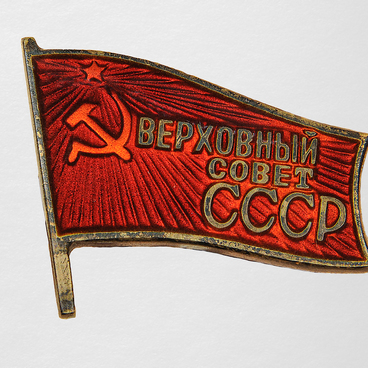In the mid-1970s, the Izhmash plant began to develop a semi-automatic hunting rifle. There are a few theories around its creation. One of them is that in 1974, All-Union Society of hunters and fishers required the Izhevsk specialists to make a weapon for shooting saigas — small steppe antelopes in Kazakhstan. During migrations, saigas ate and trampled the crops, and as their population had grown too numerous, hunters with standard shotguns could not overpower them. According to the other theory, the rifle development started under the order of the USSR government that planned to enter a saiga meat supply contract with France.
Designers Valery Kharkov and Yuri Krylov used the AKM assault rifle to create a Saiga semi-automatic hunting rifle capable of handling the 5.6×39mm caliber. A total of 200 units were produced as an experimental batch.
1992, the first year of the post-Soviet era, was marked by radical economic reforms and hyperinflation. For the first time in its long history, the Izhmash plant received no state orders, and Yuri Alexandrov’s design bureau took the AK-103 assault rifle as a base and developed a weapon for civil hunters — a 7.62 Saiga rifle for the intermediate cartridge of the 7.62×39mm caliber. A shotgun Saiga-410 appeared a year after, chambered for popular calibers .308 Winchester and .223 Remington. This version of the rifle was designed for foreign sales. For Russian hunters, the Izhmash offered the 5.6×39mm caliber Saiga. The plant produced approximately 50,000 carbines in the first year alone.
In 1995-1996, the developer Gennady Nikonov adapted the AK original system for high-power smoothbore cartridges of the 20-gauge and 12-gauge. In 1998, the Saiga-308 chambered for a large 7.62×51mm cartridge was used by designers Andrey Chukavin and Lev Ponomarev to create a new model Saiga-9 for the 9×53mmR caliber. That cartridge was used for big-game hunting.
In the early 1980s, the design of the grooved Saiga carbine series was eventually transformed from a military weapon to a traditional hunting gun. The Izhmash plant developed new stocks and buttstocks that changed the appearance of Saiga to that of a civilian gun.
These rifles helped the plant to cope with the economic and political crisis of the 1990s. In 2009, to celebrate the 90th anniversary of Mikhail Kalashnikov, the Izhmash produced a limited series of exclusive Saiga rifles according to the designer’s patent. One of these rifles was acquired by the museum.
Designers Valery Kharkov and Yuri Krylov used the AKM assault rifle to create a Saiga semi-automatic hunting rifle capable of handling the 5.6×39mm caliber. A total of 200 units were produced as an experimental batch.
1992, the first year of the post-Soviet era, was marked by radical economic reforms and hyperinflation. For the first time in its long history, the Izhmash plant received no state orders, and Yuri Alexandrov’s design bureau took the AK-103 assault rifle as a base and developed a weapon for civil hunters — a 7.62 Saiga rifle for the intermediate cartridge of the 7.62×39mm caliber. A shotgun Saiga-410 appeared a year after, chambered for popular calibers .308 Winchester and .223 Remington. This version of the rifle was designed for foreign sales. For Russian hunters, the Izhmash offered the 5.6×39mm caliber Saiga. The plant produced approximately 50,000 carbines in the first year alone.
In 1995-1996, the developer Gennady Nikonov adapted the AK original system for high-power smoothbore cartridges of the 20-gauge and 12-gauge. In 1998, the Saiga-308 chambered for a large 7.62×51mm cartridge was used by designers Andrey Chukavin and Lev Ponomarev to create a new model Saiga-9 for the 9×53mmR caliber. That cartridge was used for big-game hunting.
In the early 1980s, the design of the grooved Saiga carbine series was eventually transformed from a military weapon to a traditional hunting gun. The Izhmash plant developed new stocks and buttstocks that changed the appearance of Saiga to that of a civilian gun.
These rifles helped the plant to cope with the economic and political crisis of the 1990s. In 2009, to celebrate the 90th anniversary of Mikhail Kalashnikov, the Izhmash produced a limited series of exclusive Saiga rifles according to the designer’s patent. One of these rifles was acquired by the museum.

